Dodge Challengers, Ranked
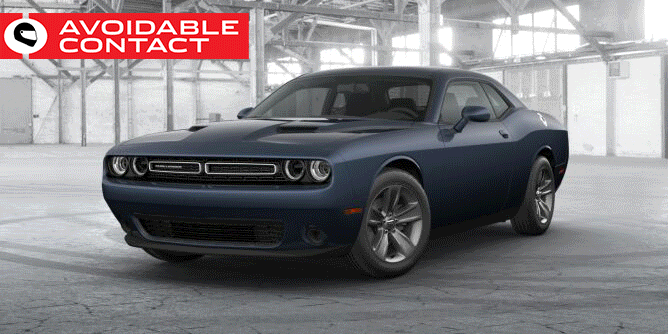
The first time I ever coached a trackday student with a modern-generation Challenger was nearly a decade ago, at New Jersey Motorsports Park. He was a “green group” novice with zero previous track time, and he showed up with a brand-new SRT-8 six-speed that was already sporting an aftermarket supercharger. Just a few minutes into our first session together, I realized that he was deliberately ignoring my instruction regarding the safest line to take around the “Thunderbolt” course. I had him pull into the pits and I asked him just what he hell he thought he was doing.
“I’m the fastest guy here, in the fastest car,” he replied, absolutely impassive behind his off-brand Oakley-style sunglasses, “and I don’t want to reveal my real speed until the afternoon.” I pride myself on having an immediate answer for nearly anything when I’m coaching but that statement left me speechless for a full five seconds.
“Why don’t we try doing the correct line on the track,” I suggested, “and you can go light on the throttle on the way out of the corners.” We spent the next two days together being passed by everything from a 1.6-liter Miata to a Toyota Yaris on Hoosiers. If the real speed ever arrived, I never noticed it. But I sent him home to his family safe and sound, which at the time I judged to be the maximum achievable result.
Fellows like my supercharged-SRT student have given the big two-door Dodge a bad rap at trackdays. It doesn’t help that many autowriters find themselves just plain overwhelmed by the challenge of driving a high-power, full-sized vehicle on a road course and as a result they tend to be less than complimentary regarding the Challenger’s merit as a trackday toy.
Ignore all of that. Even the rental-spec variants can be a lot of fun at a casual event, and the big-motor Challys can be just plain joyful. I’ve driven well over two dozen of them in (mild) anger, ranging from the zero-options automatics to the SRT-fettled variants, and I’ve enjoyed them all. In the list that follows, I’ve ranked the trackday fitness of all the different 2018 Challenger models. This isn’t a strict list of laptimes, as you’ll see. Instead, it’s kind of a buyer’s guide for the potential buyer who wants to use his new Dodge with NASA, Hooked on Driving, or any of the other weekend-getaway providers out there. Just for fun, they’re ranked worst-to-first.
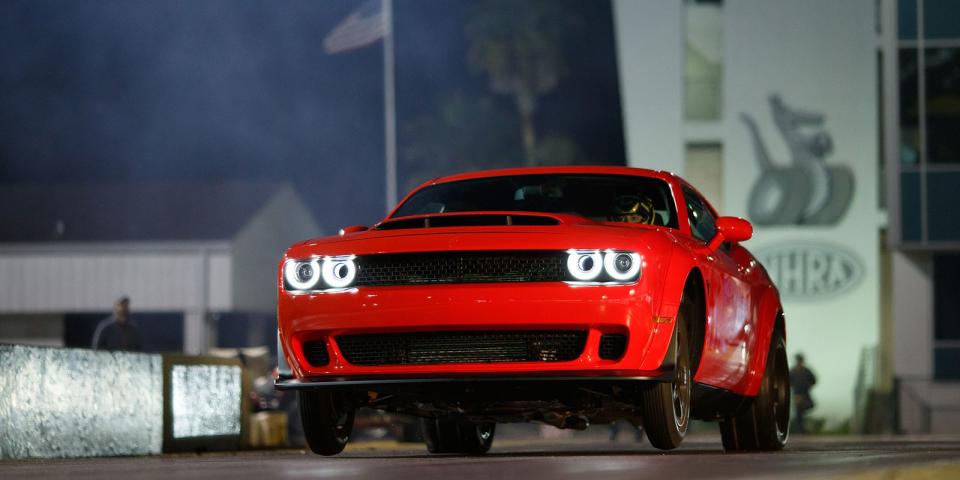
Dead Last: SRT Demon
No surprise, right? This is a drag-radial special that is explicitly designed for a different task. It’s the only Challenger that I wouldn’t recommend taking to a road course at all. I doubt too many of you will be upset by this, because getting a Demon build slot is just slightly easier than getting a Nintendo SNES Classic at your local Target store.
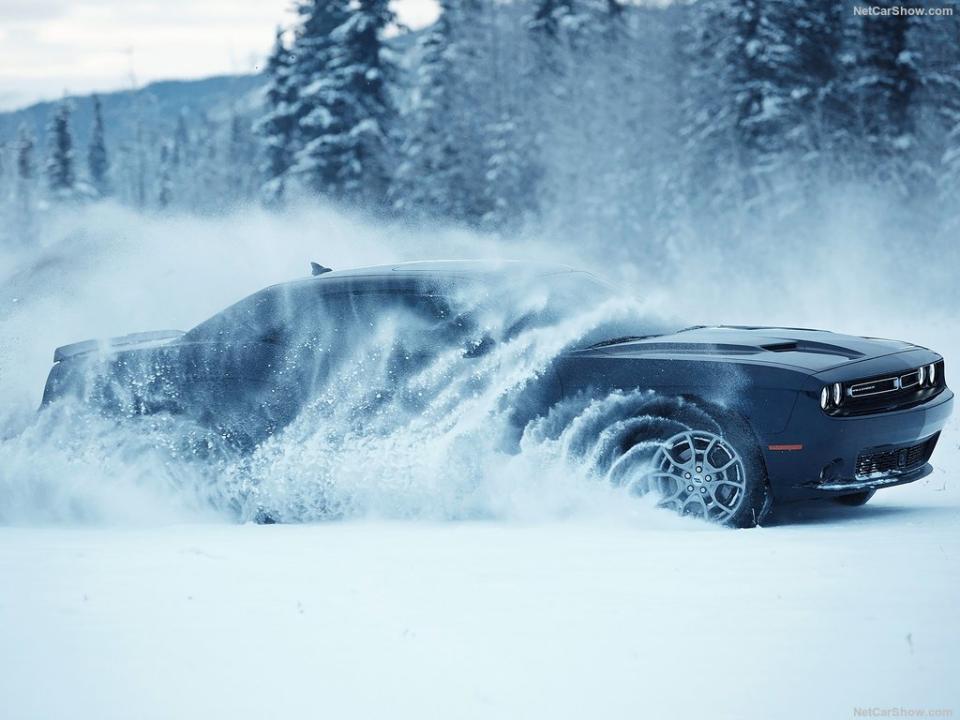
9. Challenger GT AWD
I know, I know. All-wheel-drive is supposed to confer some kind of massive advantage on the racetrack. And it does–in situations where a car can’t get all the power down at the rear wheels on corner exit. In the case of the Pentastar-powered, two-ton-plus Challenger GT AWD, that’s not really a concern or a problem. And there’s a substantial penalty in weight and steering feel. So feel free to give this one a pass–unless you live in an area where frequent snow makes that powered front axle a genuine benefit.

8. Challenger SXT Pentastar
This affordable version of the big Dodge coupe isn’t near the bottom of the list because of the engine. To the contrary, the Pentastar six feels fast enough on track and you’d be surprised what it can catch on a long straight like what you get at VIR or even Laguna Seca. No, in this case it’s the mandatory automatic transmission. With a six-speed manual, the Challenger SXT would be a heck of a budget track rat. The brakes are also a little soft, but you could address most of the fade with proper pad compound and brake fluid. The SXT Plus offers a bit more contact area, so if you’re determined to take a V-6 Challenger to the track it’s a good idea to spend the extra money.
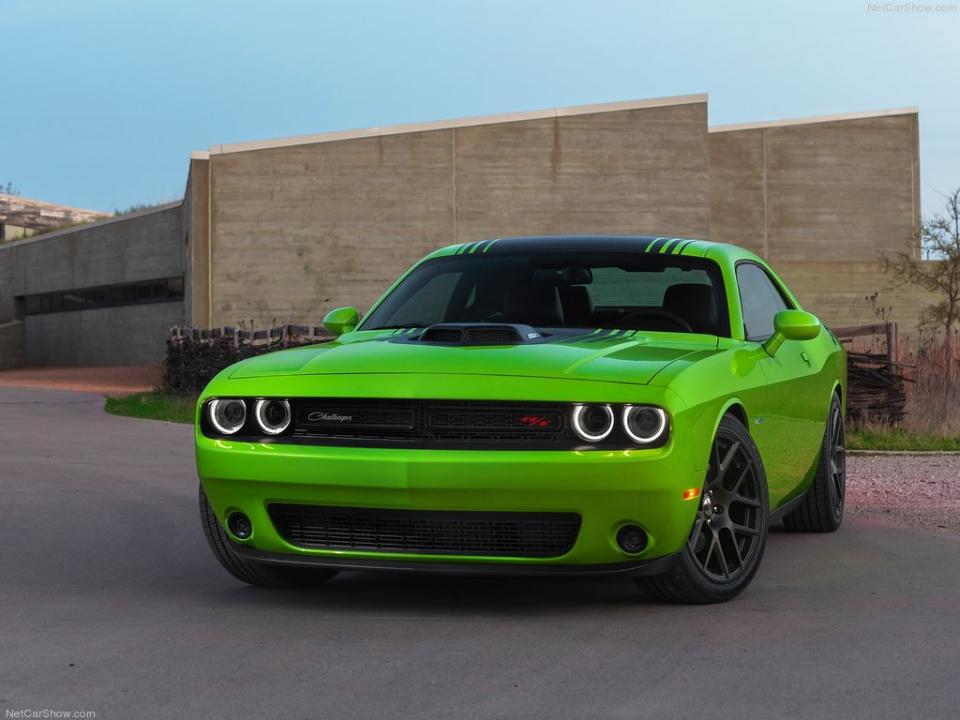
7. Challenger R/T and R/T Shaker
How many times have you heard that a stock Miata can probably beat a Challenger around a race track? Back in 2010 I took a six-speed 5.7-liter Shaker and ran it head-to-head around Summit Point’s Main Circuit with a talented young NASA driver who had a mildly track-prepped 1.8-liter NA Miata. We did two three-lap challenges; for the first one, I started ahead of the Miata at the green flag and ended up putting about 1500 feet on the little red Mazda by the end of the third lap. For the second challenge, I started behind the Miata, with an agreement that I wouldn’t try to pass until after the first turn. I pulled out and around my friend on the way downhill to the back section, made it stick with just a little more brake fade than I wanted, and went on to finish about the same distance ahead.
That’s an urban legend busted for you in fine style --- but the 5.7-liter cars, particularly the Shaker, are just not that happy on track. The Hemi shoves them along just fine, but they all suffer from soft suspension, poor body control, and in the case of the Shakers they have a wheel/tire package that just isn’t suited for this sort of thing. Truthfully, comparing the automatics I’d rather have an SXT... but you can get a clutch pedal with the R/T so that’s enough to put it ahead. Make sure you get the Super Track Pack if it’s available, but don’t expect lap-time miracles from what is fundamentally a boulevard-focused Chally.
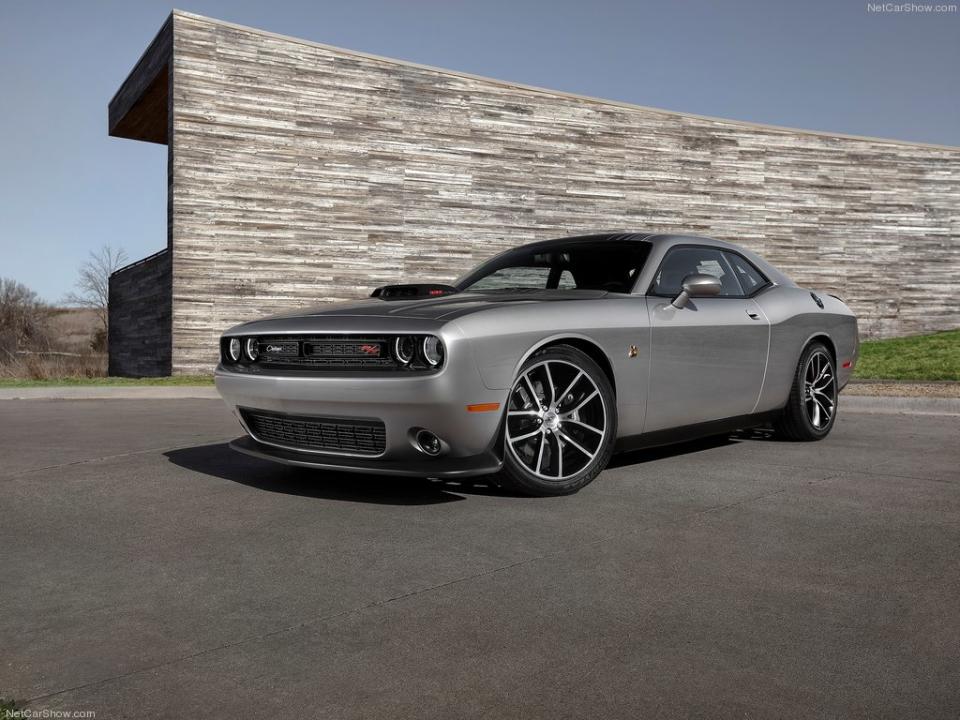
6. Challenger Scat Pack and Scat Pack Shaker
These cars are a little more buttoned-down than the 5.7-liter R/T variants, and they have the almighty 392 Hemi which makes a bigger difference around a road course than the numbers might suggest. But they are still short on body control and they are fast enough to expose the limitations of the stock brakes. With that said, there are a lot of drivers out there who use trackdays as a sort of serial drag race connected by safe-and-sane corner approaches. They’ll be fine with these big-hearted coupes.
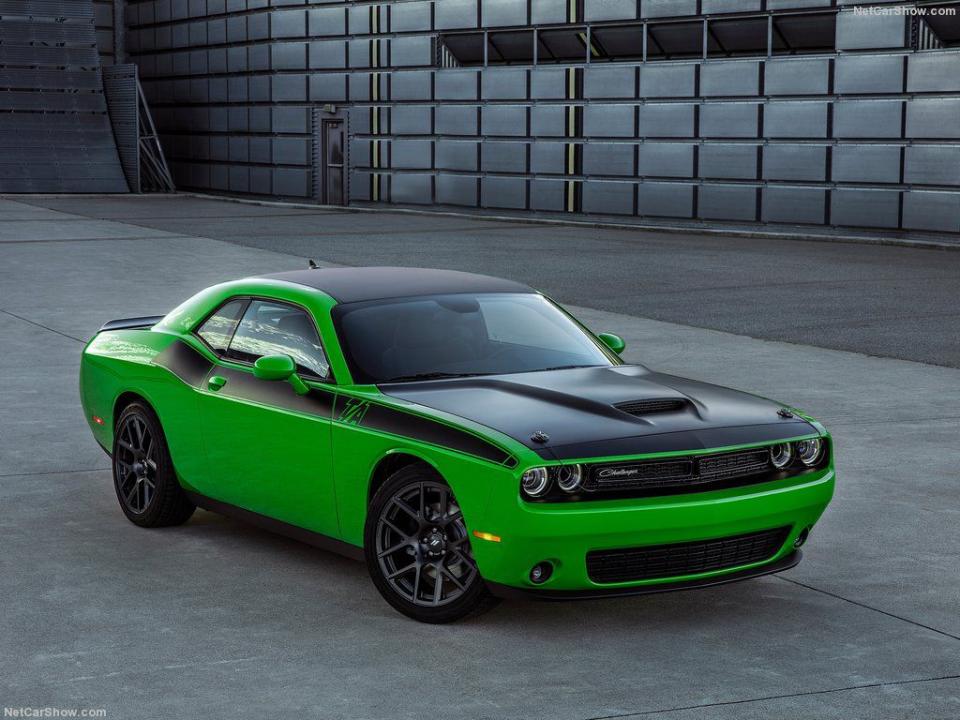
5. Challenger T/A 5.7-liter
If you have a bit of financial flexibility, you should spend the extra seven grand and get your T/A with the 392 and the big brakes. The “small-block” T/A is mechanically not that far away from the Super Track Pack-equipped R/T cars. It does, however, come with a very nice tire, which makes a major difference. Plus it just plain looks cool.
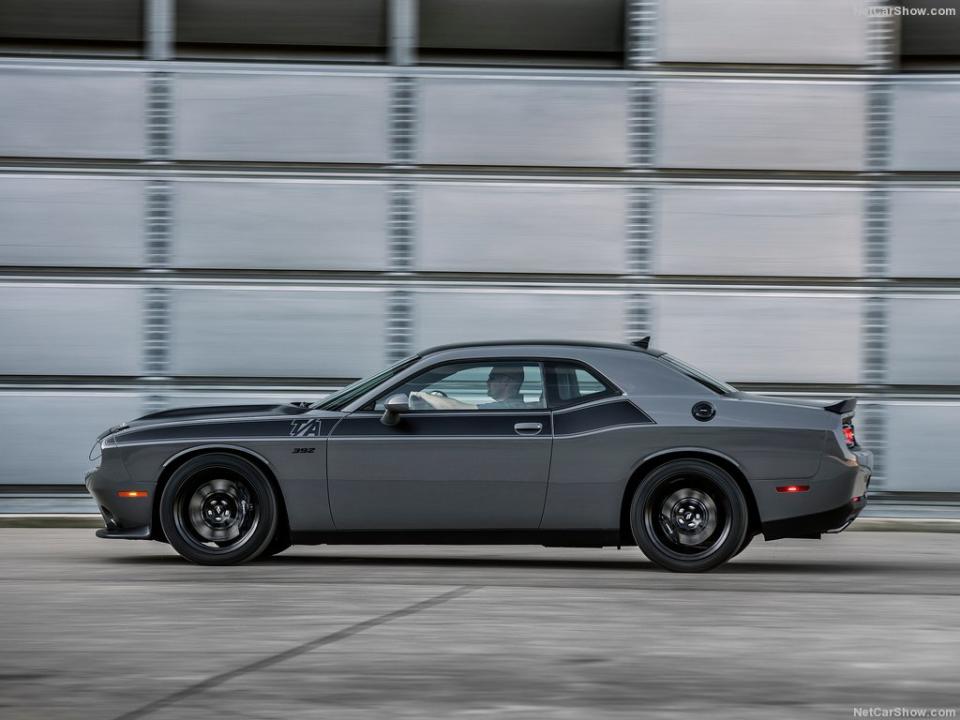
4. Challenger T/A 392
Now we’re getting into the fun stuff. The T/A 392 has massive power, substantial brakes, a suspension tuned by people who know what they’re doing, and you can get it with a proper transmission. These are bulletproof cars that can run around a track all day without breaking a sweat. No, they aren’t “flickable”, but they are serious fun and they serve as a litmus test of sorts for performance drivers. If you can develop the discipline required to keep the weight in check and you can keep from sawing at the wheel like a drunken harbor pilot, you will embarrass a lot of more “track-focused” machinery.
I thought long and hard about putting this above the SRT Challenger because I just plain dig everything about the way the T/A looks, from the headlights to the hood to the stripes to the interior. But the fact remains that the SRT 6.4-liter has one important advantage that the T/A does not…

3. SRT 392
…and that is the adaptive suspension. It makes a big difference, trust me. The biggest part, pun intended, of setting a fast lap in the Challenger is not letting the inertia of the chassis get out of control. The kind of sloppy, half-baked-trail-braked corner entries that can be shrugged off in a Miata or FR-S will cost you serious time in the Dodge. The naturally-aspirated SRT has the ability to select the “Track” mode for the dampers and it goes a long way towards getting the body buttoned down at speed. Arguably, the “plain” SRT Challenger is the best bargain in the lineup. You can look at the price as being either the same as a deep-discount plain-Jane Corvette, or you can look at it as being less than a loaded four-cylinder BMW 3-Series. Up to you.
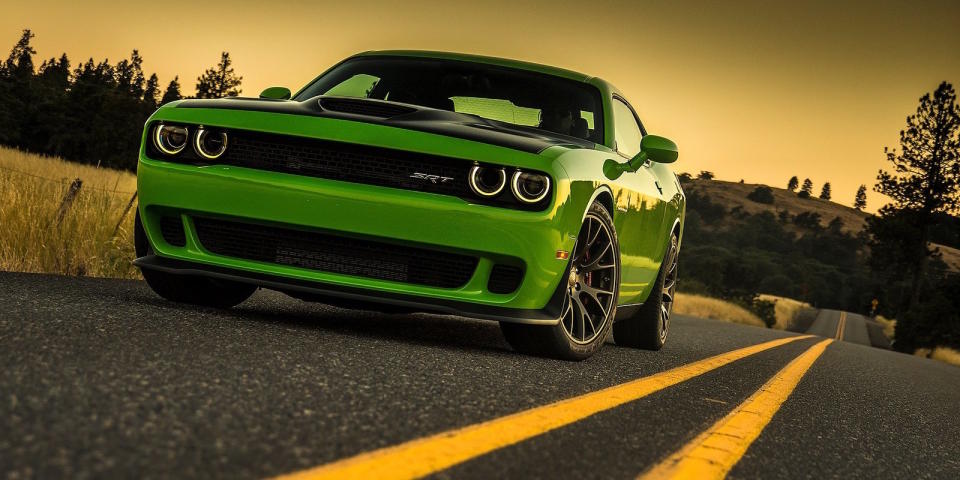
2. SRT Hellcat
The conventional wisdom on the Hellcat is that it’s got too much power and too little tire. The conventional wisdom is half right, because there’s no such thing as too much power and the throttle, as we fortysomething ZX-14R owners like to say, rolls in both directions. The “too little tire” part is both true and fair. But that doesn’t mean that the Hellcat isn’t brilliant on track, because it is. It just requires discipline and a driver who knows how to make the best of the car’s abilities. And you can always put R-compound tires on the car and even out the power/traction equation a bit.
The brilliance of the Hellcat is that it is fast on the straights. This is critical because the vast majority of trackdays only permit passing on the straights, particularly for intermediate-level drivers and below. So all you have to do is not hold people up too badly in the corners and then you can zip around ‘em on the next straight. This is great fun. Compare this strategy to what a Miata driver on race tires experiences: he finds himself glued to everybody’s bumper in the middle of the corner but he then gets left behind afterwards. That’s depressing and I, for one, am tired of it. Get a Hellcat. Go to the track. Have fun. But if you want even more fun…

1. SRT Hellcat Widebody
This will be just like the Hellcat, only better. The cognoscenti know that it’s not impossible to fit 305-width tires on standard Hellcats–but with the widebody the way will be clear for some really serious racing rubber. If you have a very good relationship with a custom wheel builder, you might even be able to come up with some 19-inch wheels that clear the front calipers and will fit 345-width Hoosier R7 tires. Don’t get me wrong. No kind of Challenger will ever challenge the aero-equipped Mustang and Camaro track specials for absolute laptime excellence. But there’s something about that widebody Challenger, even in press photos, that makes your humble author want to start yelling crazy stuff the way Al Pacino did when he was talking to Hank Azaria in “Heat”. The only red-blooded men on this planet who are not excited about the widebody Hellcat are the fellows who paid top dollar for what we will now be calling “narrowbody” Hellcats, kind of like they were slab-side Seventies 911s or something.
You know, when I was a kid I used to read about the Sixties musclecars and wonder why everybody in the whole world didn’t buy one when they had the chance. Some day, we might ask ourselves the same question about the Dodge Challenger. It’s a hell of a product–characterful, handsome, and unabashedly focused on people who really, truly like automobiles. From SXT to Demon, they are all brilliant in their own right, but they are also starting to overstay their welcome in the showroom. I don’t know how much longer the party will last. Don’t wait too long.
You Might Also Like

 Yahoo Autos
Yahoo Autos 